TYPEWRITER

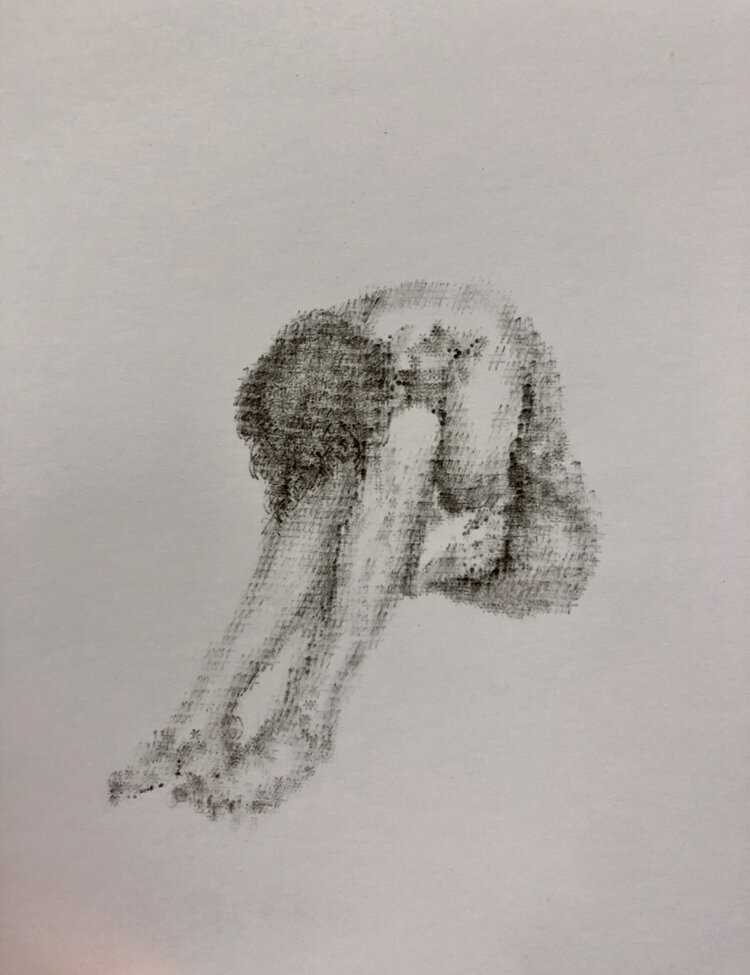
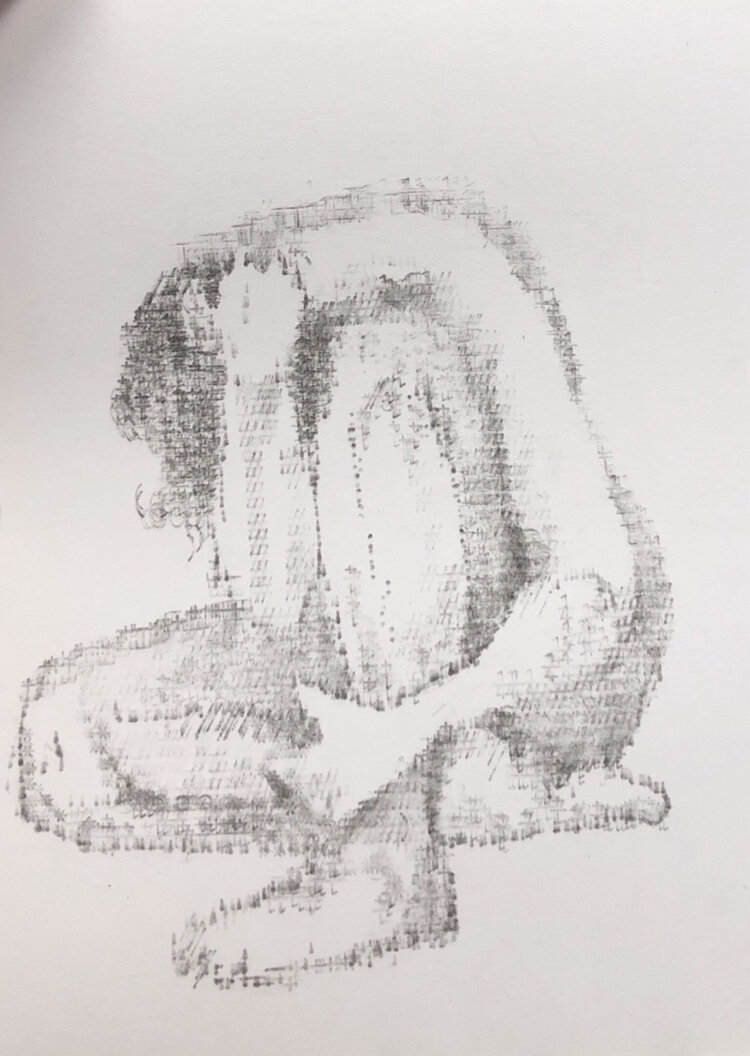
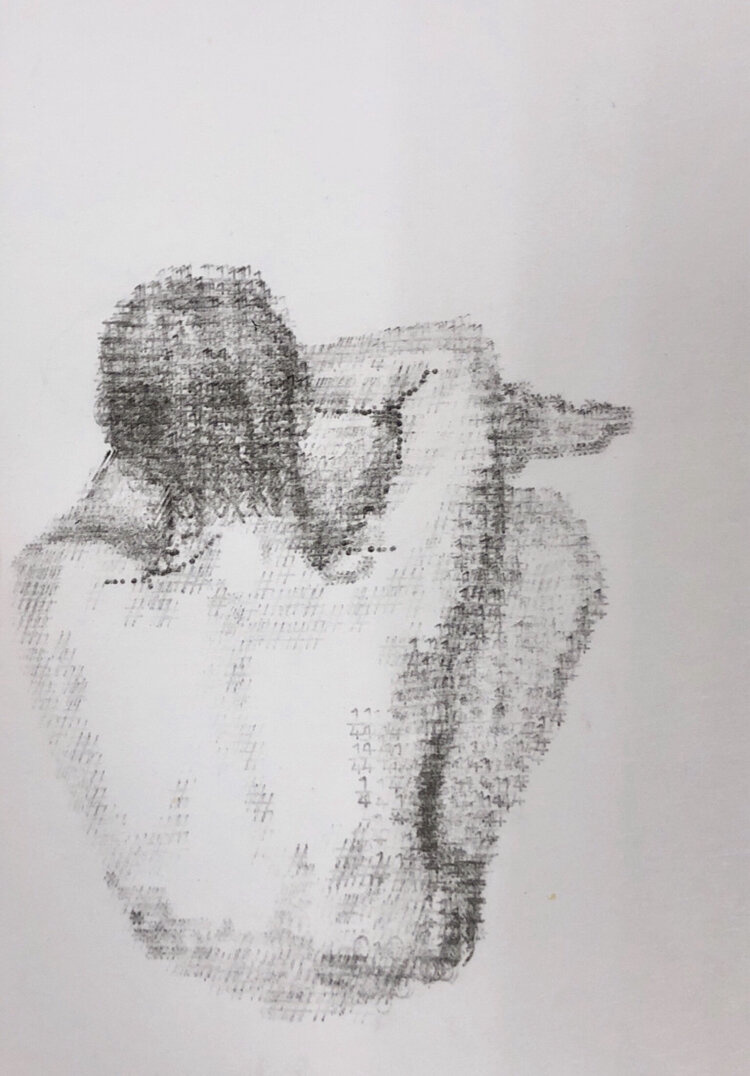
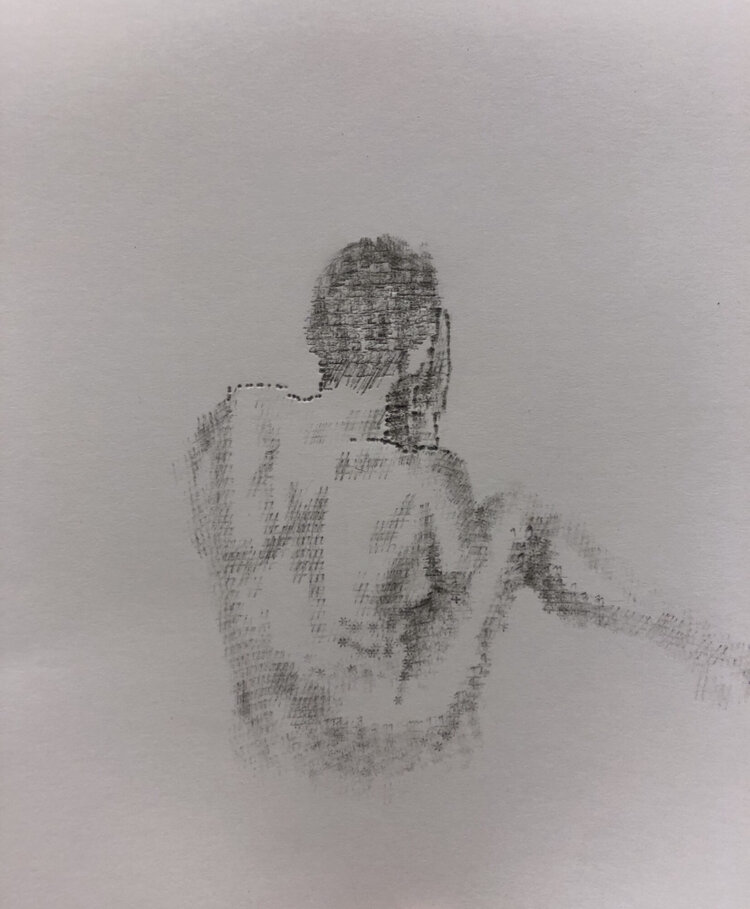

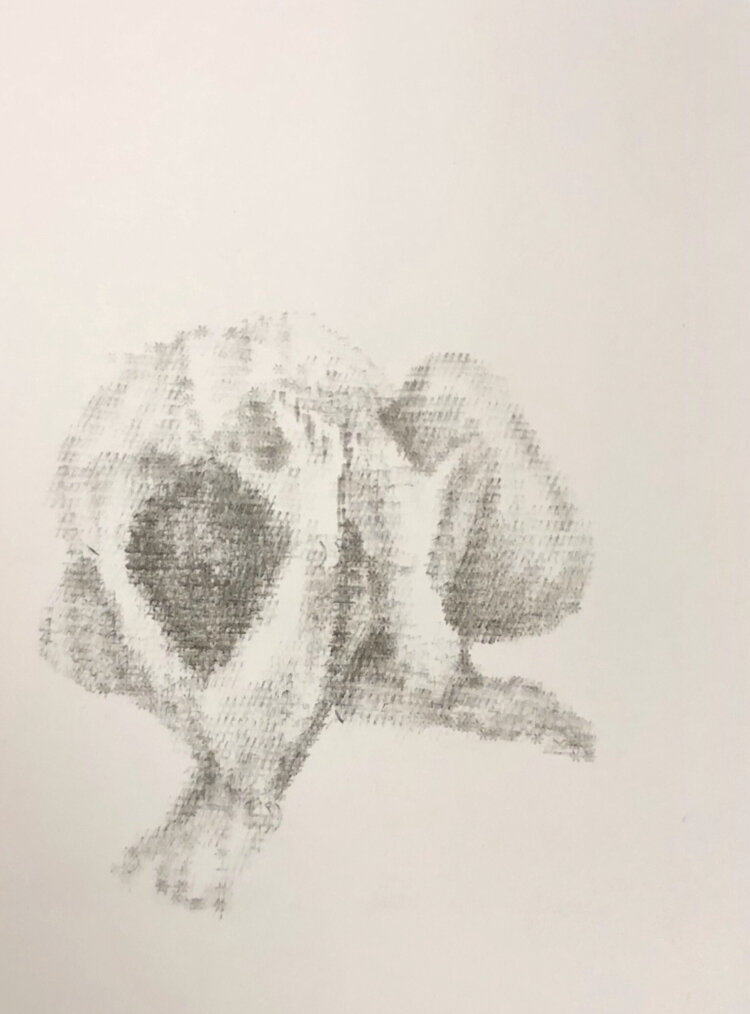
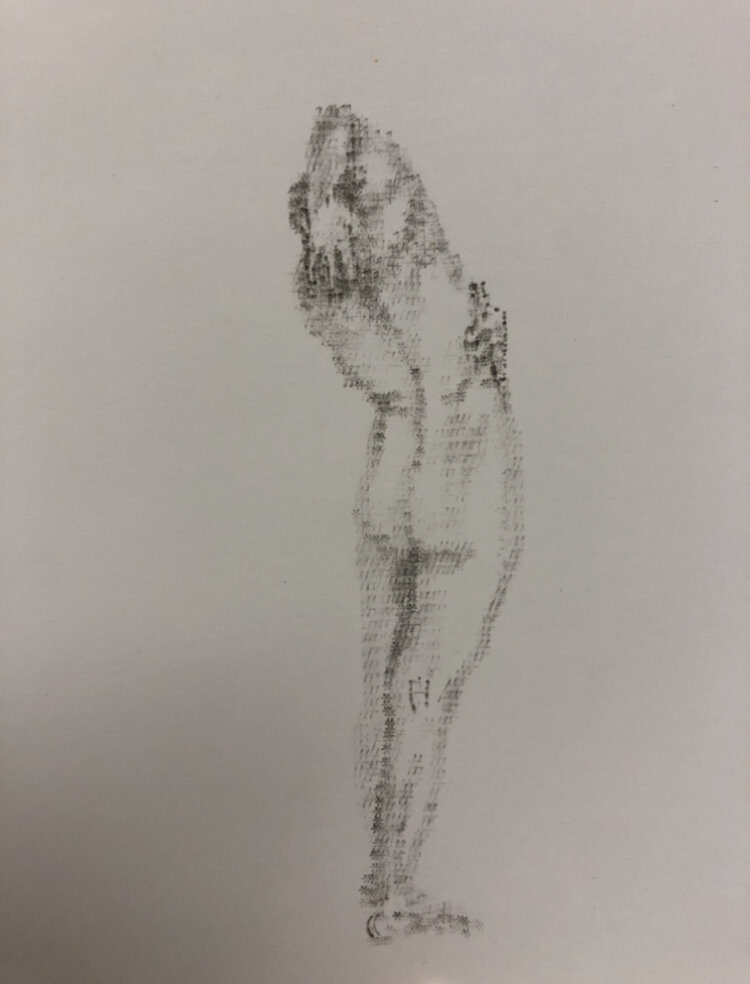
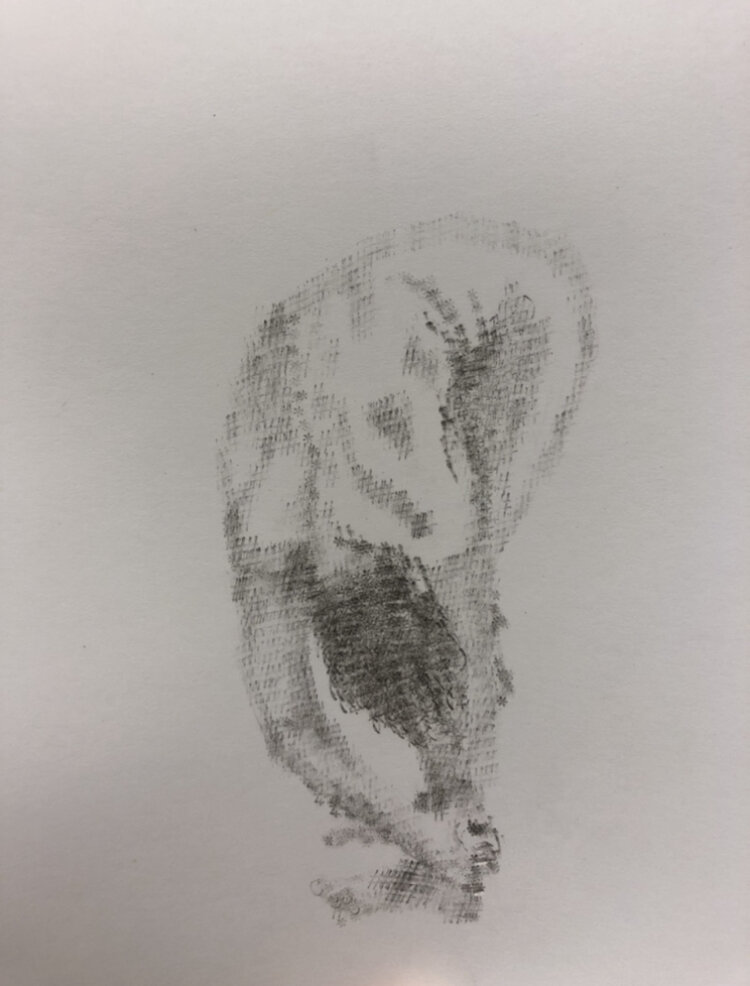
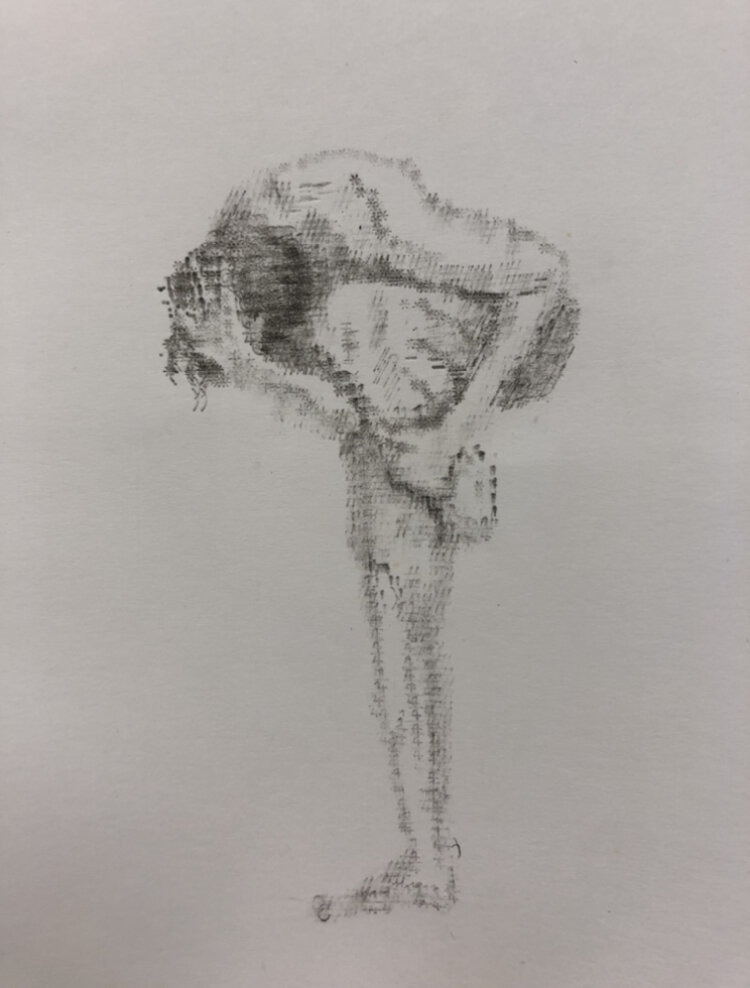

Postures of Grief
Typewritten on a blue Mark 1300 by Tesco Typewriter




Octothorpe (#)
Octothorpe (#) Key Typewritten onto Canvas
47 ½ x 37 in Framed
Recently, I found a garment in my closet that had been moth-eaten. It was jarring to realize that something just worn could be so quickly undone by the work of a single tiny creature. Sometimes, the rhythm of something small can tear through our lives in unexpected ways.
Each keystroke of the typewriter leaves a mark, building a pattern, like a screen with gaps, exposing what lies beneath. In the same way, a few small words, casually spoken, can unravel our sense of stability.
From a distance, this work resembles ancient writing. Two halves of one canvas suggest solidity, something etched in stone. Upon taking a closer look, there is no legible text, only a blur of almost discernable ink. The illusion of clarity dissolves, revealing a sense of erosion.
This work was created by rolling a piece of canvas through the typewriter and typing each mark by hand. Each gap or pattern irregularity was from manual manipulation of the fabric and roller. The densities in the pattern vary based on the force applied to each key.

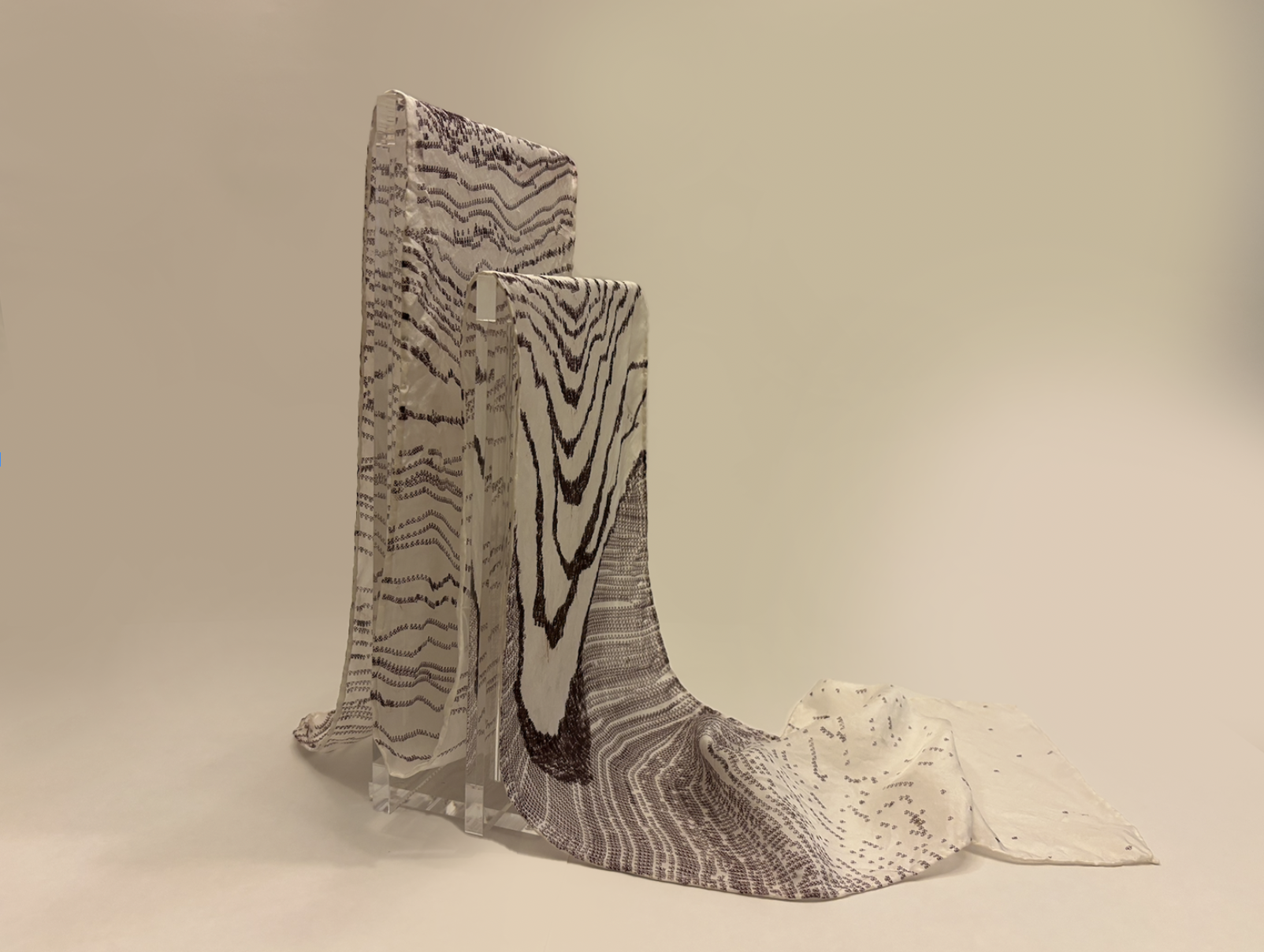






And, and, and, and, and.
8 x 60”, Typewriter Ink on Silk








Parentheses, Punctuation Marks I
8 x 60”, Typewriter Ink on Silk
An exploration on Punctuation marks: this piece was conceived in a conversation of women in the workplace, particularly in regards to secretarial roles during the 20th century. The loud and repetitive action of typing in the workplace is primarily extinct, however the process of making this piece pays homage to it. Parentheses are usually inserted as an explanation or afterthought, something that we almost forgot but is vitally important. These two things in concert with one another also lead one to consider how we societally “parenthesize” people. Who do we choose to leave out of histories? What do we consider as afterthoughts?




Semicolon, Punctuation Marks II
8 x 60”, Typewriter Ink on Silk
An exploration on Punctuation marks: Pauses, or visual chasms interrupt rows of semicolons. Used to indicate a pause that is more pronounced than that indicated by a comma, a semicolon creates a breath.






Dashes, Punctuation Marks III
8 x 60”, Typewriter Ink on Silk



Question Marks, Punctuation Marks IV
8 x 60”, Typewriter Ink on Silk







Periods, Punctuation Marks V
8 x 60”, Typewriter Ink on Silk
